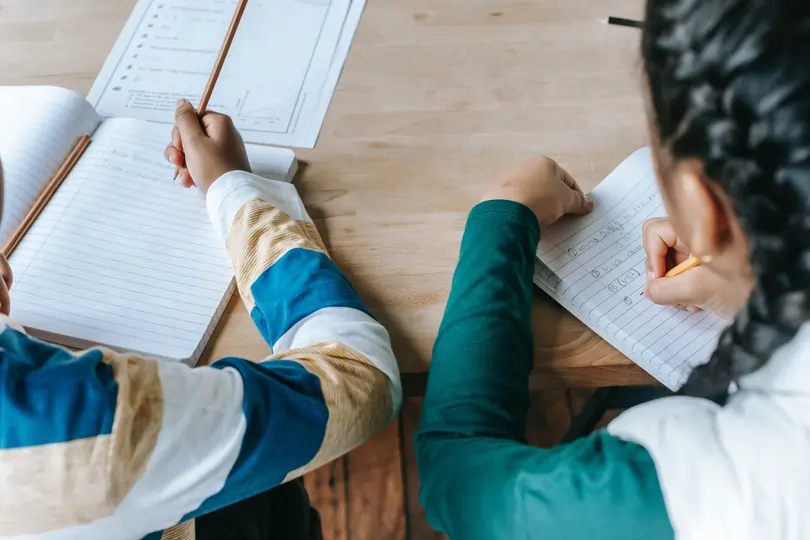Volume 1
In this article, we are going to learn about Volume. The learning objectives are:
- Understanding Volume
- Measuring Volume in Litres
1. Understanding Volume
Volume is the amount of space taken up by the liquid in a container. It is a measure of the amount of liquid in the container.
Example 1:
Tank A has more water than Tank B.
Tank B has less water than Tank A.
Tank A has a greater volume of water than Tank B.
Tank B has a smaller volume of water than Tank A.
Example 2:
Tank A has the same volume of water as Tank C.
Tank D has more water than Tank A.
Tank B has less water than Tank C.
Tank D has the greatest volume of water.
Tank B has the smallest volume of water.
Question 1:
The cups shown below are identical. Which cup has a smaller volume of water?
Answer:
(2)
Question 2:
The containers shown below are identical. Which container has the greatest volume of water?
(1) (2) (3)
Answer:
(1)
Question 3:
The jugs shown below are identical. Jug __________ has more water than Jug __________.
- A, B
- B, C
- C, D
- A, D
Answer:
(2)
Question 4:
The jugs shown below are identical. Jug __________ has less water than Jug __________.
- B, A
- D, C
- B, D
- A, C
Answer:
(3) B, D
Question 5:
Bottle A and Bottle B are of the same size. Water from the bottles is poured into cups of the same size. Fill in the blanks with more/less.
- Bottle A contains __________ water than Bottle B.
- The volume of water in Bottle B is __________ than the volume of water in Bottle A.
Solution:
Bottle A contains 5 cups of water.
Bottle B contains 2 cups of water.
Answer:
- Bottle A contains more water than Bottle B.
- The volume of water in Bottle B is less than the volume of water in Bottle A.
Question 6:
Jars X, Y and Z are the same size. Hannah uses cups of the same size to measure the volume of milk in Jars X, Y and Z.
Arrange the jars, starting from the one with the greatest volume of milk to the one with the smallest volume of milk.
- Jar X, Jar Z, Jar Y
- Jar Y, Jar X, Jar Z
- Jar Y, Jar Z, Jar X
Solution:
Jar X can hold 4 cups of water.
Jar Y can hold 8 cups of water.
Jar Z can hold 6 cups of water.
Answer:
(3) Jar Y, Jar Z, Jar X
2. Measuring Volume In Litres
Volume is the amount of space taken up by the liquid in a container. It is a measure of the amount of liquid in the container. The unit for volume of liquid is litre. We write ℓ for litre.
Example 1:
Five bottles of water of 1 ℓ each are used to fill up an empty container completely. What is the volume of water in the container?
Solution:
Volume of water in the container
\(= 1 \;\ell + 1 \;\ell + 1 \;\ell + 1 \;\ell + 1 \;\ell\)
\(= 5\;\ell\)
OR
\(5 \times 1 \;\ell = 5\;\ell\)
Answer:
5 ℓ
Question 1:
What is the volume of water in the tank if all the water from the 8 ℓ bottle and the two 15 ℓ jugs shown below are poured into it?
- 28 ℓ
- 30 ℓ
- 36 ℓ
- 38 ℓ
Solution:
Volume of water in the tank
\(= 8 \;\ell + 15 \;\ell + 15 \;\ell\)
\(= 38 \;\ell\)
Answer:
(4) 38 ℓ
Question 2:
All the water from the bottle and the 2 jugs are poured into the tank below. What is the volume of water in the tank?
- 16 ℓ
- 18 ℓ
- 20 ℓ
- 24 ℓ
Solution:
Volume of water in the two jugs
\(= 2 \times 4\;\ell\)
\(= 8\;\ell\)
Volume of water in the bottle \(= 12 \;ℓ\)
Volume of water in the tank now
\(= 8 \;\ell + 12 \;\ell\)
\(= 20 \;\ell\)
Answer:
(3) 20 ℓ
Example 2:
Five cups of water are needed to fill a jug completely. Two jugs and two cups of water are used to fill a kettle completely. What is the volume of water in the kettle?
Solution:
Volume of water in the jug
\(= 5 \times 1\;\ell\)
\(= 5 \;\ell\)
Volume of water in the kettle
\(=\) Volume of water in 2 jugs \(+\) Volume of water in 2 cups
\(= 1 \;\ell + 1 \;\ell + 1 \;\ell + 1 \;\ell + 1 \;\ell\)
\(= 5 \;\ell\)
Answer:
12 ℓ
Question 3:
Three mugs of water are needed to fill a teapot completely. One teapot and two mugs of water are used to fill a pot completely. What is the volume of water in the pot?
- 6 ℓ
- 8 ℓ
- 10 ℓ
- 4 ℓ
Solution:
Volume of water in the teapot
\(= 3 \times 2 \;\ell\)
\(= 6 \;\ell\)
Volume of water in the pot
\(=\) Volume of teapot \(+\) Volume of 2 cups
\(= 6 \;\ell + 2\;\ell + 2 \;\ell\)
\(=10\;\ell\)
Answer:
(3) 10 ℓ
In this article, we have learnt Volume:
- Understanding Volume
- Measuring Volume in Litres
 SG
SG  VN
VN 












